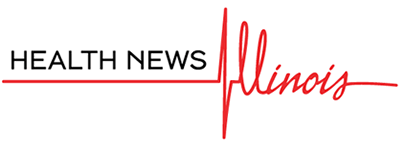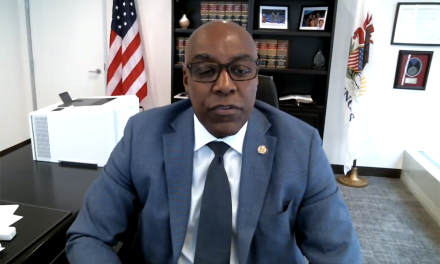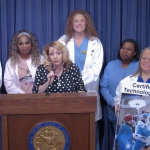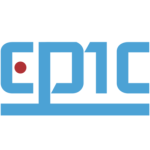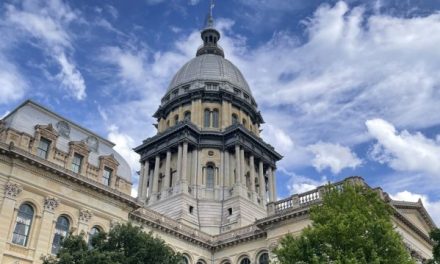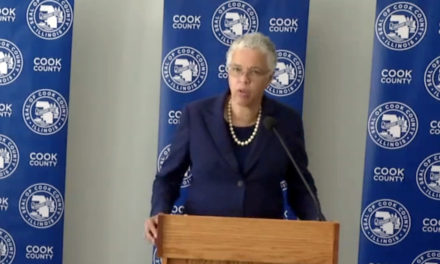
On the record with Katherine Baicker, dean of the University of Chicago Harris School of Public Policy

As lawmakers reconvene at the state and federal level, it will be important for them to have a deeper conversation on what healthcare needs to look like moving forward, said Katherine Baicker, dean of the University of Chicago Harris School of Public Policy.
“I think the debate often gets boiled down to the question of whether healthcare is a right or not,” Baicker, a leading scholar in the economic analysis of health policy, recently told Health News Illinois. “I think that’s the wrong question because healthcare is not one thing. Healthcare is a continuum of things, from stuff that is incredibly valuable to people’s health, to things that are of really marginal health benefit, even to some things that are probably contraindicated and not good for your health.”
Baicker also spoke on lessons learned during the pandemic as it relates to insurance policy and the intriguing potential of telehealth to close equity gaps.
Edited excerpts below:
HNI: What should policymakers be thinking about as we start to wind down some of these temporary provisions enacted early on the pandemic as it relates to Medicaid’s continuous enrollment policy and insurance?
KB: Given COVID, people appreciate even more than ever the importance of being insured. And there can be lots of discussion about the most effective form of insurance for people, but I think there’s little room for debate about whether people are better off being insured or uninsured. People are clearly better off being insured. We have a lot of evidence that highlights that. So getting people insured is very good for their access to healthcare, for their well-being and for their financial security. There’s a big return to that. But as state Medicaid offices and beyond are also well aware, it’s expensive. There had been some hopes that if you insured people, it would actually save money because they would consume healthcare so much more efficiently. They’d go to the doctor instead of the emergency room, and it would actually cost less. I don’t think there is evidence that it costs less when people are insured. I think they use more healthcare, and that care is valuable for their health and well-being, but it costs money and it will increasingly strain Illinois’ budget as federal funds wane. The last point that I’ll make … is that small barriers to insurance take-up can have big effects on enrollment. You would think that the most important thing is just whether the policy is affordable, what the premium is for the individual on the non-group market or if there are copays in Medicaid. That is very important, but other non-financial things also matter a lot — how easy it is to navigate the system, how much paperwork is required, how onerous the paperwork is, how available are enrollment assisters to help you through the process. Those things make a big difference in take up of available benefits. And in fact, a lot of the uninsured across the country are eligible for either free or very heavily subsidized insurance and these other barriers seem to be important in standing in the way.
HNI: What do you think policymakers should be doing in preparation for the waning of these federal funds?
KB: It is important to plan for that in the budget. We know that there is some persistence in enrollment in many good ways, in some less good ways, that people tend to stick with the plans that they have and that getting people enrolled in the first place is the biggest hurdle. Now people do drop off of insurance as they have to recertify their eligibility for Medicaid, for example. But I think that the state policymakers should expect enrollment to continue in very heavily subsidized plans or free plans and need to plan the budget accordingly. The flip side of that is that financial barriers matter a lot and recertification matters a lot. And if the state does not intend to help people stay enrolled, some particularly vulnerable populations may roll off of insurance, particularly if additional costs were imposed on them. The state should think about the consequences to those enrollees’ health and financial security of turning on and off of insurance.
HNI: As we look back over the last couple of years, what are some of the main lessons we should take as it relates to insurance?
KB: One of the perennial challenges in our healthcare system is the patchwork of insurance coverage where, if you have insurance through your job, and you change jobs or lose your job, you risk losing your insurance. And Illinois and other states stepped up to open new enrollment possibilities during the pandemic, special enrollment periods or increased eligibility for Medicaid. That highlighted the challenges posed by having insurance tied to jobs for most people who are privately insured at a time when you have both a pandemic and an economic crisis in huge swaths of the population. Having options for more continuous coverage would be beneficial both for budget planning and for individuals’ health and well-being. Healthcare use is lower in the first six months or a year when people get insured as they figure out, ‘Who’s my new primary care doctor? How do I use this insurance? Who’s in my network?’ And it takes some time to figure out how to take full advantage of the benefits through insurance. So churn is very bad for the continuity of care for patients, and for the predictability of spending. So I think that thinking about how to better integrate the non-group and small-group markets with Medicaid plans and smooth eligibility reassessment windows would be beneficial.
I think one more thing in the worked well category … is I do think we saw much increase in the use of telemedicine. That technology was available. We had Zoom before, it’s not like it got invented during the pandemic. But the familiarity and ease of use for both patients and healthcare providers really evolved during that period, and there are some great things about that that we want to keep. On the other hand, there’s lots of care that cannot be delivered via telemedicine and being sure that there are mechanisms to get people into follow-up. I think it’s a little more challenging to get the in-person follow-up consistently. The entry point is telemedicine. So I think great additional attention needs to be paid to how to get people to the next steps of care when that’s warranted based on their health needs.
HNI: Do you see the growing role of telehealth addressing some of the health disparities that we see, especially in Chicago and nationally? Additionally, is there a risk that the rise in telehealth may lead to growing disparities?
KB: Telehealth can address some really important disparities that people might have in mind — rural health where there’s limited access to providers — but I think we see some of the same disparities in cities like Chicago, where there’s a shortage of mental healthcare providers or substance abuse treatment or a range of behavioral health and other health specialties, where there really are shortages that are disparately felt across neighborhoods in the city. Telehealth can be a great tool for that. Plus, it can be a tool for addressing the more limited flexibility that people in different kinds of jobs have to seek care during normal office hours and the time it takes away from work can be a wonderful mechanism to get care for people who don’t have the kind of flexibility in their jobs that lets them take a half day off work to have a doctor’s appointment.
Now, the disparities that could be exacerbated, I think we saw the growing importance of the digital divide. And that’s in healthcare. It’s in online education. It’s in availability of medical information. It is no longer an optional utility to have access to the internet. It’s a fundamental need for lots of things from healthcare to education and beyond. And so addressing the digital divide and making sure everybody has high-speed access is really important, being able to use all of these tools. And, unfortunately, this is probably not the last pandemic we’re going to face, and having that kind of infrastructure in place in advance of the next pandemic will help mitigate some of the harms we saw in this one.
HNI: What healthcare reform do you think is feasible in the current political climate, and what should lawmakers be considering?
KB: I think we need to have a serious national and state level discussion about the healthcare we want to be sure everyone has access to. I think the debate often gets boiled down to the question of whether healthcare is a right or not. I think that’s the wrong question because healthcare is not one thing. Healthcare is a continuum of things, from stuff that is incredibly valuable to people’s health, to things that are of really marginal health benefit, even to some things that are probably contraindicated and not good for your health. If we said that every person was entitled to every possible item of healthcare through public programs, that would be more than 100 percent of the GDP. We would have no money for anything else like education or housing or transportation or food. So thinking seriously about what the minimum acceptable access is, and designing public programs to ensure that everyone has that care available, I think is a necessary step to getting universal coverage for an acceptable bundle of care that’s sustainable in any real way. And I think a lot of that will have to come through changing the way we pay for healthcare. And some great experiments are going on at the federal level and at the state level in moving away from fee-for-service towards other ways of paying for care that promote higher value use of health resources. And by higher value, I mean putting our healthcare dollars where they are going to improve health the most. And that’s not the way it is often discussed in the public discourse. But I think we’re not going to find our way to a better functioning more equitable healthcare system until we wrestle with those fundamental questions.
